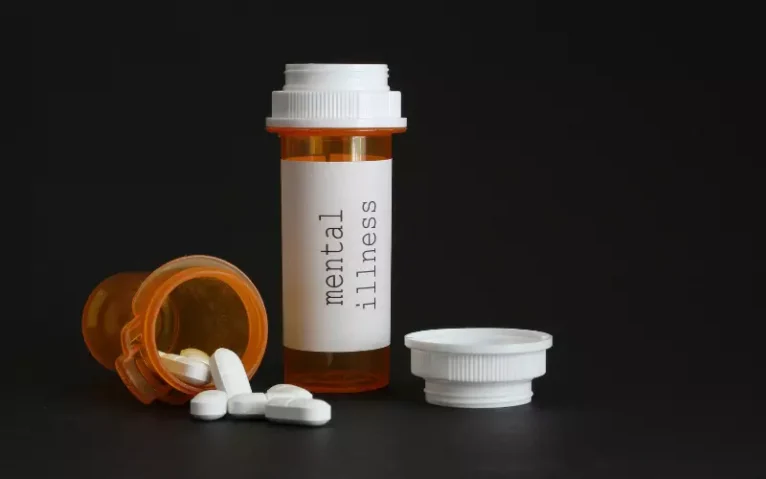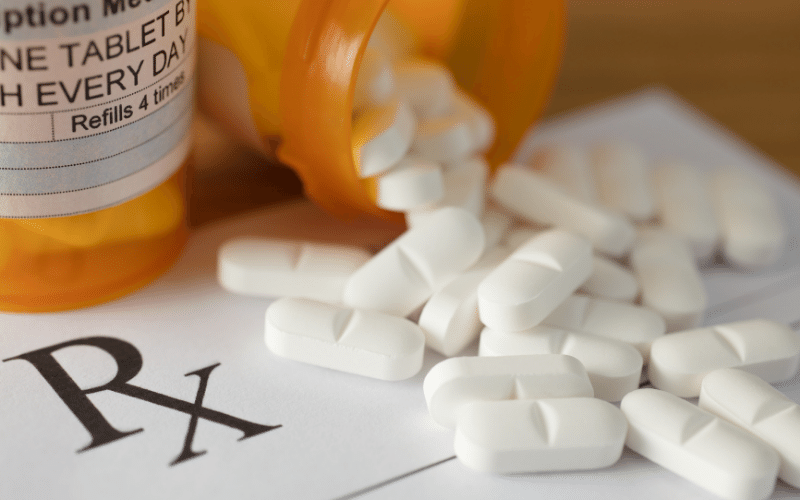Roughly 38% of the 20.3 million adults with a substance use disorder have a mental illness. Likewise, 18% of people with mental illness also have a substance use disorder. The way drugs interact with our brain makes these co-occurring disorders inevitable. When someone presents a co-occurring mental and substance use disorder, they might meet the criteria for dual diagnosis.
1. Alcoholism and Antisocial Personality Disorders
In short, alcohol misuse and abuse are connected to various mental health conditions, including dementia, schizophrenia, and mania. Antisocial personality disorder (ASPD) is often intensified when a person is under the influence of alcohol. While the exact cause of ASPD remains unknown, alcohol abuse can be a direct or indirect cause of the disorder for most people. Alcohol changes the way our brain’s neurotransmitters and serotonin levels work. Serotonin has been linked to aggressive behaviors, which is why alcoholism and antisocial personality disorder are connected.
2. Marijuana Abuse and Schizophrenia
It’s not rare for people with schizophrenia to develop an addiction. While marijuana seems like an inoffensive drug – currently being legalized in the country – it can exacerbate mental illnesses. Schizophrenia is a mental health condition that impacts the way people think. Classified as a psychotic disorder, people often experience symptoms of psychosis and an abnormal state of consciousness. These symptoms often come and go and appear to be disconnected from reality. Between 10 to 70 percent of people with schizophrenia have a substance abuse problem. Various studies also point out that marijuana is one of the most commonly abused substances among people with schizophrenia. One of the links between the two is psychosis. When someone is high on marijuana, they can develop psychotic symptoms. Researchers note that people with schizophrenia that use marijuana will experience worsened symptoms. Likewise, people that use marijuana and carry specific genes can have an elevated chance of developing schizophrenia.
3. Cocaine Addiction and Anxiety Disorders
Cocaine use is linked to many psychological symptoms, including paranoia, hallucinations, and suspiciousness. Although cocaine is a stimulant and causes psychological symptoms similar to anxiety disorders, people still believe it can have calming effects. Mostly, cocaine abusers feel at ease and less concerned about their surroundings while under the influence. But, this doesn’t mean it’s helping with their anxiety. Cocaine affects regions of the brain that produce high energy levels. Over time, these changes can cause increased paranoia, aggression, and uncontrollable thoughts. Unfortunately, quitting cocaine without supervision will also result in cocaine withdrawal symptoms, including high anxiety.
4. Opioids Addiction and PTSD
Today, estimates say at least 1 in every 5 Americans struggles with opioid addiction. Posttraumatic stress disorder (PTSD) involves the avoidance of thoughts and actions associated with past trauma. People with PTSD experience hypervigilance and high anxiety that directly affects their quality of life. As a result, many individuals with PTSD turned to opioids to reduce discomfort from such symptoms. The co-occurrence of PTSD with opioid abuse is about 22%. The odds of using opioids chronically are higher in Veterans with PTSD and major depressive disorder. Researchers believe that self-medication with opioids to deal with chronic pain may exacerbate the symptoms of PTSD. At the same time, not treating chronic pain can also intensify symptoms of PTSD.
5. Heroin Addiction and Depression
Narcotics users often manifest symptoms of depression that can aggravate their addiction. Research suggests that patients with heroin addiction are three or four times more likely to develop major depressive disorders than the general public. Heroin attaches to the opioid receptors in the brain, releasing endorphins and euphoria. High levels of these chemicals make addicts feel enormous relief. However, heroin use can worsen depression symptoms like anxiety, negative moods, and suicidal thoughts. Mood swings and being in a suicidal state are common side effects of heroin use. Heroin abuse damages the brain permanently even after a user discontinues the habit and goes through treatment. This is why, for their long-term mental health, addicts have to be very aware and careful of their stressors, especially since a heroin addiction impedes proper and normal responses to stressful environments and situations.
Why Do Co-Occurring Disorders Happen?
These co-occurring disorders sometimes overlap and begin simultaneously, or one may develop before or after the other. Researchers believe that it can be hard to figure out which condition comes first. But they agree on three possibilities why co-occurring disorders happen in the first place:
- Genetics: Having a close family member with drug or alcohol addiction can increase someone’s chances of developing a substance abuse problem. The same applies to mental health disorders.
- Biology: Unfortunately, some people are wired in a way that makes them prone to substance abuse. Anything from prenatal development, early childhood exposure, or the chemical makeup of someone’s brain can play a role.
- Trauma: People who experience sexual abuse, physical abuse, wartime experiences, or a natural disaster can struggle with a trauma that leads to substance abuse.
- Environment: Something as simple as living or growing up in a toxic environment can develop a substance abuse disorder.
Although the symptoms of one disorder may predate the other, both diseases tend to exacerbate each other’s signs. For example, people struggling with depression will try to escape the symptoms by taking prescription opioids or heroin for quick relief.
How to Recognize Co-Occurring Disorders
It can be extremely challenging to tell the difference between addiction and mental illness. In most cases, these disorders share symptoms and overlapping side effects. The dual diagnosis must be done when the person is abstinent and there are no drugs in their system to be as accurate as possible. While symptoms will vary tremendously, these are some of the warning signs that point to a dual diagnosis:
- Changes in sleeping and eating patterns
- Dropping once essential hobbies and activities
- Experiencing extreme mood swings
- Frequently feeling scared or paranoid without cause
- Having difficulty thinking or focusing
- Inability to see changes in their behavior or personality
- Increased irritability
- Increased or decreased libido
- Isolating from friends and family members
- Lack of attention to personal hygiene
- Loss of touch with reality
- Participating in risky behavior despite consequences
- Complaining of physical pain with no cause
- Thoughts of suicide or suicide attempts
What Exactly Is Dual Diagnosis Treatment?
Integrated care is one of the most recommended approaches to treat dual diagnosis disorders, regardless of the co-occurring combination. While specific services will vary upon each person’s needs, most of the time, integrated treatment offers a range of treatment services to the individual, providing the person with everything necessary to heal on all levels. Beyond treating each condition individually, these programs also promote lifestyle changes that promote health and wellness, including:
- Improving sleep habits
- Working on communication skills
- Improving eating habits and nutritional behaviors
- Working on family relationships
- Addressing work-related issues and improving job skills
- Managing any legal issues
By addressing these issues while also receiving treatment for their conditions, patients have a better chance of returning to work, rebuilding relationships, and building a strong support network that helps them maintain long-term recovery. At Lighthouse Recovery Institute, our co-occurring substance abuse treatment programs are tailor-made to meet each individual’s unique needs.
- Evaluation: The first step is to ensure all mental health symptoms are accurately diagnosed. Understanding the exact diagnosis will help develop a more appropriate treatment plan.
- Medical Detox: When someone starts the detox process from alcohol or drugs, they will likely experience psychological and physical withdrawal symptoms. A comprehensive detox offers medical support and monitoring to assist in the process and stabilize treatment.
- Rehab: Depending on the state of their drug use and health disorders, patients will go to an inpatient or outpatient setting. Here, they’ll have access to behavioral therapies, support groups, and other treatments to treat their mental disorders
- Aftercare: Before leaving treatment, many patients enroll in life skills development programs that help them feel prepared to go back to normalcy. In these programs, patients learn necessary skills from finding a job, managing their finances, and eating healthily.
Dual Diagnosis Treatment Centers Near Me
Lighthouse Recovery Institute is South Florida’s top provider of dual diagnosis addiction treatment, and our facility is one of the very few offering treatments for co-occurring disorders. We believe that no two addiction cases are alike, so our programs are tailored to each individual. If you or someone you know needs treatment for co-occurring disorders, we can help. People with co-occurring disorders need a unique style of drug addiction treatment. Contact us today to learn more about our dual diagnosis treatment program and start your journey to recovery. Reach out to an admissions specialist by calling us at 866-308-2090 and receiving a complimentary consultation to determine which program is best for you or your loved one.









